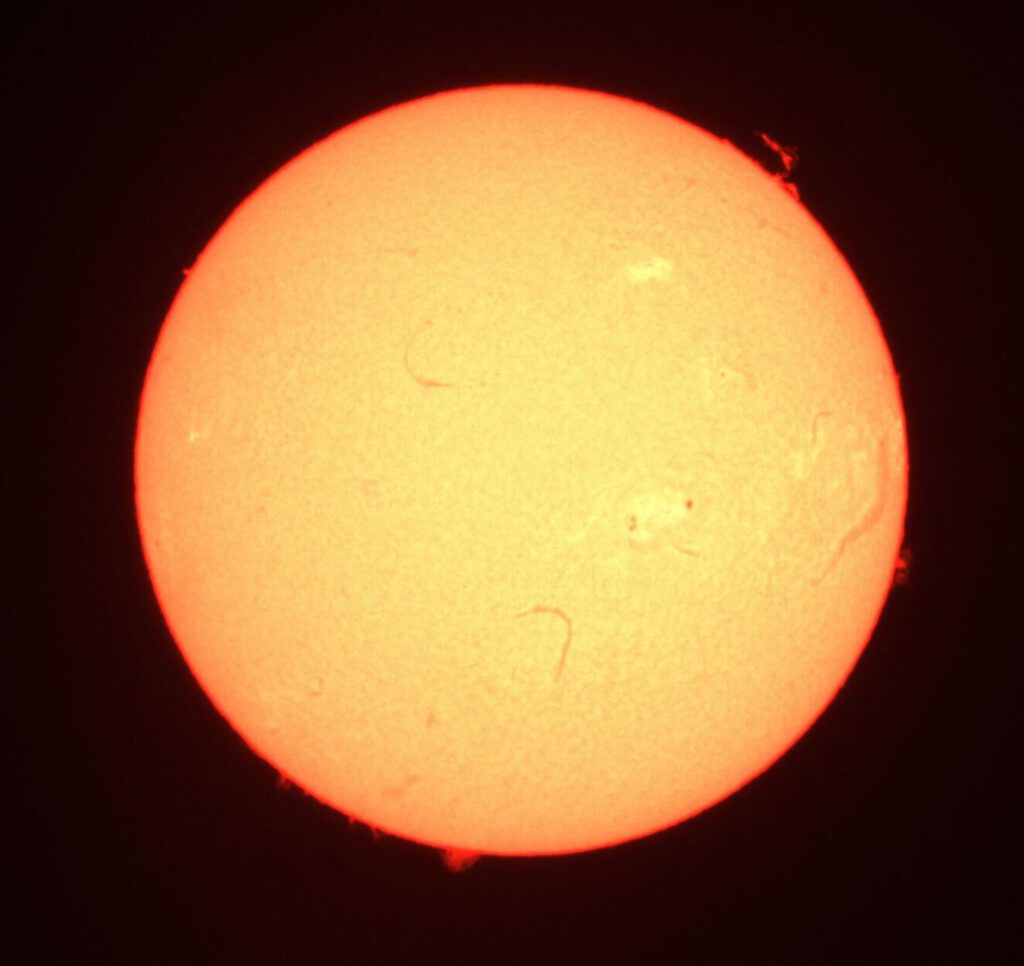Increased solar activity in 2024
At this point I would like to warn you never to look into the sun with binoculars or a telescope without protection! There is a high risk of serious eye damage!
Solar activity is almost at the peak of its 11-year cycle, which is expected later this year or in early 2025. This means a higher probability of aurora sightings in our latitudes too. In the northern polar regions, this phenomenon is known as Corona Borealis, in the southern regions as Corona Australis.
Auroras occur when charged particles, known as solar winds, from the sun hit the earth's atmosphere. When these particles hit the Earth's atmosphere, they collide with the gas molecules.
During these collisions, these particles emit energy that becomes visible as light. In the polar regions, the solar winds hit the atmosphere more frequently. This creates the fascinating colors and patterns that we know as auroras. The colors are caused by different gases in the atmosphere, for example oxygen for green and red lights. Auroras are therefore an impressive natural spectacle caused by the interaction of solar winds and the earth's atmosphere.
The following page provides an overview of sightings expected in the short term: https://www.spaceweatherlive.com/de/polarlichtaktivitat/polarlichtoval.html
Sunspots and solar eruptions, known as prominences, are also occurring more frequently, although special solar telescopes or solar filters are required to observe them.
To mark the occasion, we are offering an opportunity to observe these impressive phenomena at our observatory on a few weekends during the summer break between May and August.
The dates are announced via a ticker on our main page.
Here is an image taken through our 40 mm solar telescope on 11.10.2023

